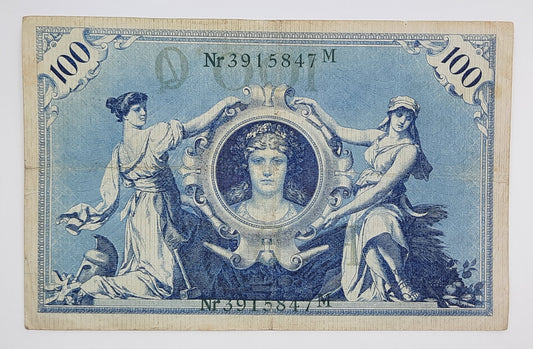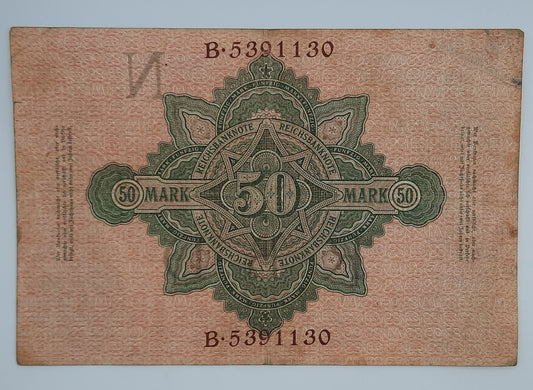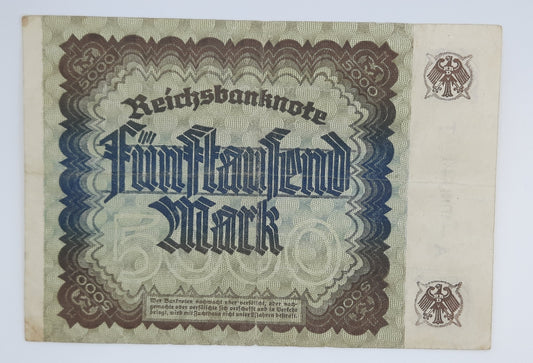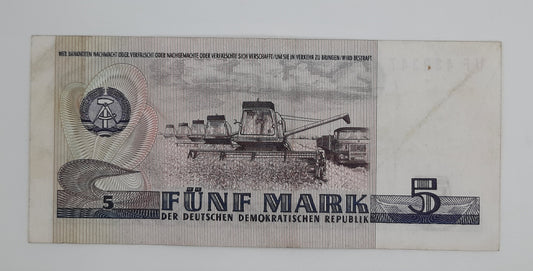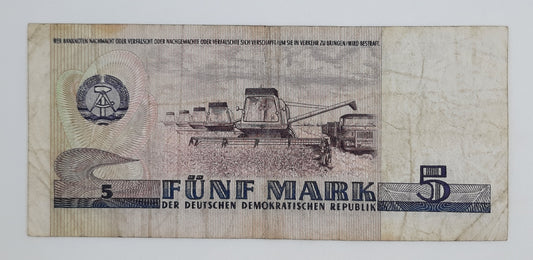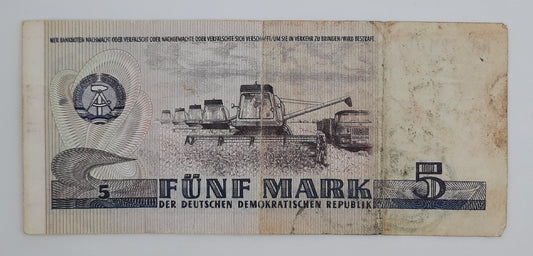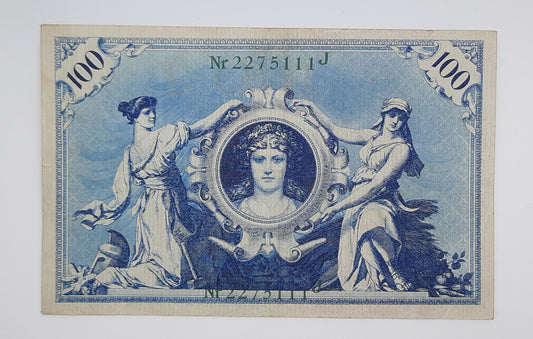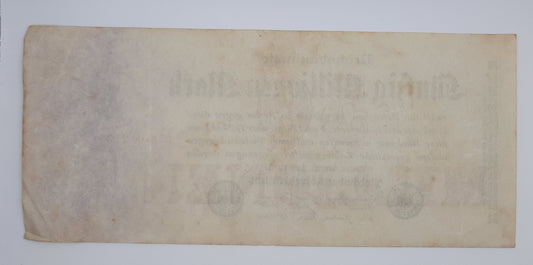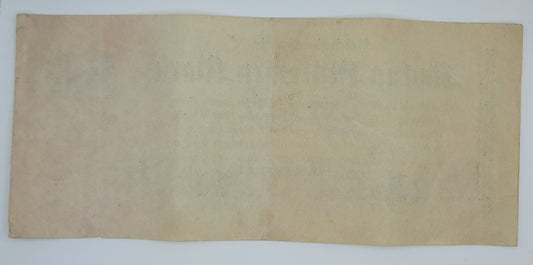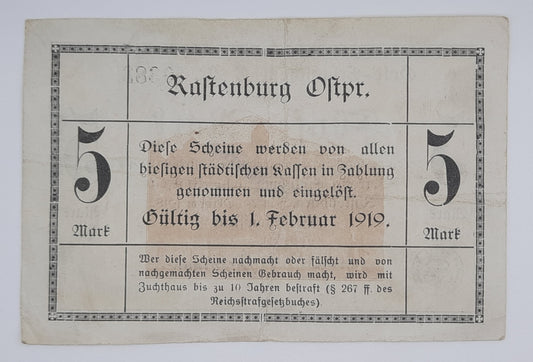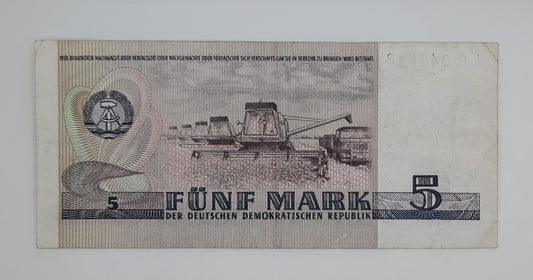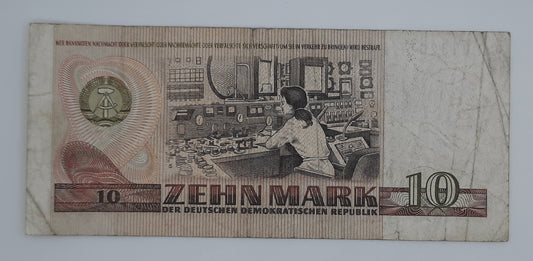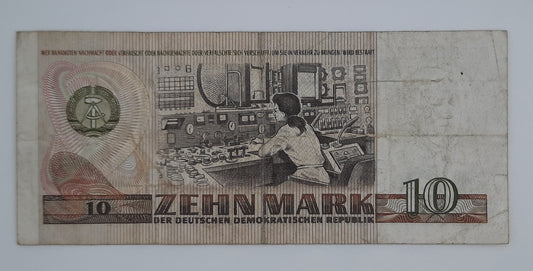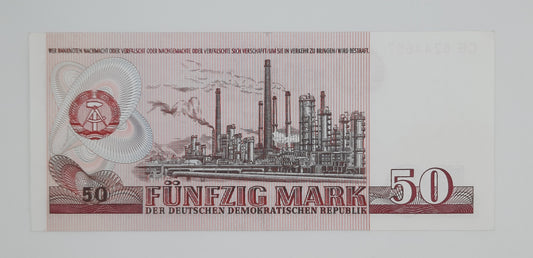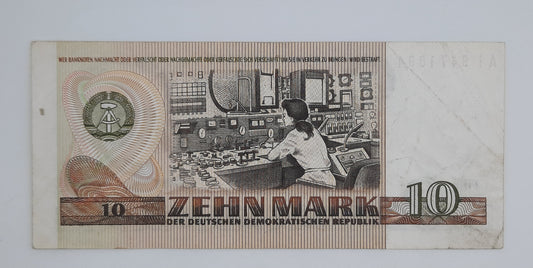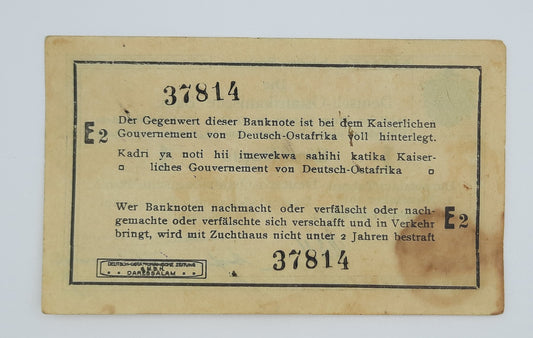Look up Country, Denomination or Year
-
1908 Germany, German 2nd Empire (Kaiserreich) - 100 German Mark Banknote P-34a
Vendor:notescounterRegular price £2.29 GBPRegular priceUnit price / per -
1910 Germany, German 2nd Empire (Kaiserreich) - 50 German Mark Banknote P-42
Vendor:notescounterRegular price £2.99 GBPRegular priceUnit price / per -
1922 Germany Weimarer Republic - 5000 German Mark Banknote Wor P-81a
Vendor:notescounterRegular price £2.69 GBPRegular priceUnit price / per -
1975 East Germany GDR, Deutsche Notenbank der DDR - 5 Ostmark German Mark Banknote P-24f Serial No. UF 438347
Vendor:notescounterRegular price £6.99 GBPRegular priceUnit price / per -
1975 East Germany GDR, Deutsche Notenbank der DDR - 5 Ostmark German Mark Banknote P-24f Serial No. QJ 465289
Vendor:notescounterRegular price £6.49 GBPRegular priceUnit price / per -
1975 East Germany GDR, Deutsche Notenbank der DDR - 5 Ostmark German Mark Banknote P-24f Serial No. JD 548722
Vendor:notescounterRegular price £5.99 GBPRegular priceUnit price / per -
1975 East Germany GDR, Deutsche Notenbank der DDR - 5 Ostmark German Mark Banknote P-24f Serial No. RI 421060
Vendor:notescounterRegular price £1.19 GBPRegular priceUnit price / per -
1908 Germany, German 2nd Empire 100 German Mark Banknote P-34a Serial No. M 3450378
Vendor:notescounterRegular price £1.80 GBPRegular priceUnit price / per -
1908 Germany, German 2nd Empire 100 German Mark Banknote P-34a Serial No. J 2275111
Vendor:notescounterRegular price £2.00 GBPRegular priceUnit price / per -
1923 Germany Weimarer Republic - 50000000 German Mark Banknote P-97b Serial No. 23N 042131
Vendor:notescounterRegular price £2.29 GBPRegular priceUnit price / per -
1923 Germany Weimarer Republic - 50000000 German Mark Banknote P-97b Serial No. R 4258726
Vendor:notescounterRegular price £2.00 GBPRegular priceUnit price / per -
1918 Germany German Empire Rastenburg, Kętrzyn - 5 German Mark Notgeld Banknote GEI435.02 Serial No. C 0383
Vendor:notescounterRegular price £10.70 GBPRegular priceUnit price / per -
1975 East Germany GDR, Deutsche Notenbank der DDR - 5 Ostmark German Mark Banknote Serial No. LC 046843 P-24f
Vendor:notescounterRegular price £6.50 GBPRegular priceUnit price / per -
1971 (1975) East Germany GDR, Deutsche Notenbank der DDR - 10 (Ten) German Mark Banknote Serial No. CR 0132077 P-25f
Vendor:notescounterRegular price £3.99 GBPRegular priceUnit price / per -
1971 (1975) East Germany GDR, Deutsche Notenbank der DDR - 10 (Ten) German Mark Banknote Serial No. RF 815423 P-25f
Vendor:notescounterRegular price £3.39 GBPRegular priceUnit price / per -

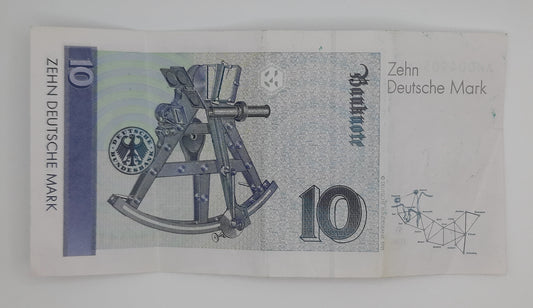
1991 Federal Republic of Germany BRD - 10 (Ten) German Mark Banknote P-38b Serial No. AK 0049054 Y4
Vendor:notescounterRegular price £8.00 GBPRegular priceUnit price / per -
1971 East Germany GDR, Deutsche Notenbank der DDR - 50 (Fifty) German Mark Banknote Serial No. CB 8244657 P-30 UNC
Vendor:notescounterRegular price £12.00 GBPRegular priceUnit price / per -
1971 (1975) East Germany GDR, Deutsche Notenbank der DDR - 10 (Ten) German Mark Banknote Serial No. A1 9471894 P-25f
Vendor:notescounterRegular price £5.00 GBPRegular priceUnit price / per -
1964 East Germany GDR, Deutsche Notenbank der DDR - 5 (Five) German Mark Banknote Serial No. JR960043 P-22
Vendor:notescounterRegular price £6.99 GBPRegular priceUnit price / per -
1915 German East Africa Deutsch-Ostafrikanische Bank - 1 (One) Rupie Banknote Serial No. E2 37814
Vendor:notescounterRegular price £20.00 GBPRegular priceUnit price / per -
1923 Weimarer Republic / Germany - 500000 German Mark Banknote Serial No. B 00074922 P-88
Vendor:notescounterRegular price £6.70 GBPRegular priceUnit price / per -

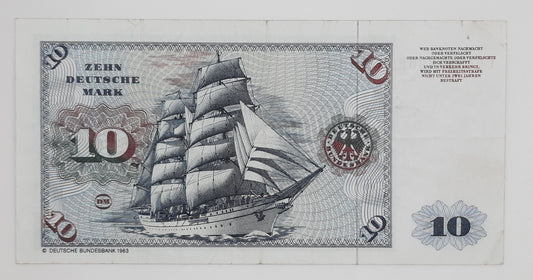
1980 Federal Republic of Germany BRD - 10 (Ten) German Mark Banknote Serial No. CN 8323699 R
Vendor:notescounterRegular price £9.00 GBPRegular priceUnit price / per
Collection: Germany
German Banknotes – A Journey Through Empire, Inflation, and Unity
Discover the fascinating history of German banknotes, which reflect the nation’s economic transformations, political upheavals, and cultural identity. Before Germany’s unification in 1871, various regional states such as Prussia, Bavaria, and Saxony issued their own currencies. The introduction of the German mark (ℳ) in 1873 established a unified monetary system under the newly formed German Empire.
Germany’s currency history is marked by pivotal events, including the hyperinflation crisis of the early 1920s, when post-World War I reparations led to extreme devaluation of the mark, resulting in billion-mark banknotes. The introduction of the Reichsmark (RM) in 1924 stabilized the economy, but World War II brought further financial instability. The post-war division of Germany led to separate currencies—East Germany introduced the East German mark (DDR-Mark), while West Germany adopted the Deutsche Mark (DM), which became a symbol of economic strength until the reunification of Germany in 1990.
In 2002, Germany transitioned to the euro (EUR), integrating its economy into the broader European Union. Collectors can find a wide range of German banknotes, from Imperial-era Reichsmarks to rare hyperinflation notes, Cold War-era East German currency, and final Deutsche Mark issues before the euro transition. Whether you’re seeking historic specimens, commemorative releases, or beautifully preserved banknotes, our collection offers a tangible link to Germany’s dynamic monetary history. Start exploring today and own a piece of Germany’s financial legacy.

